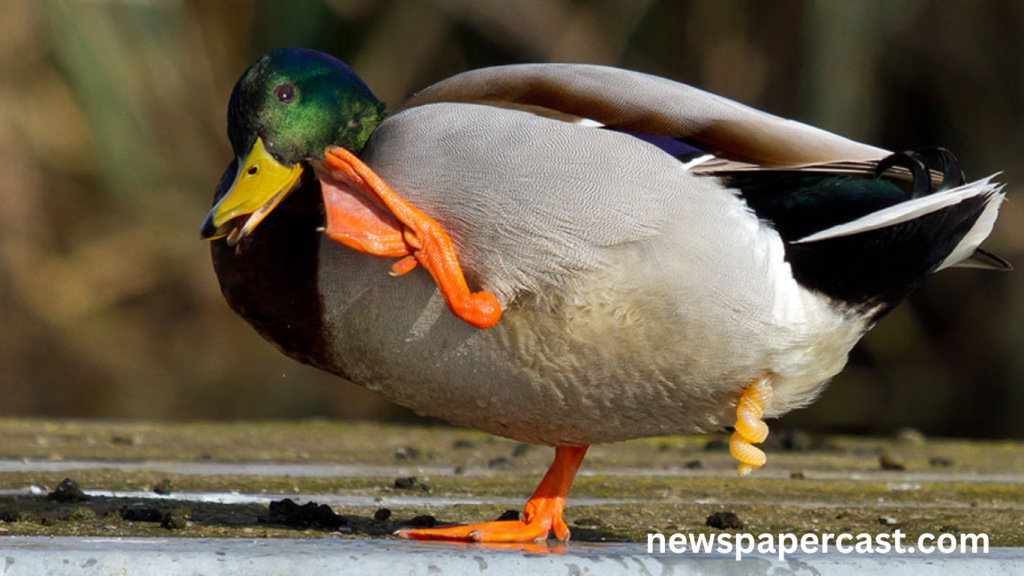In the world of ducks, reproduction is not a peaceful affair. Instead, it’s a battle of evolutionary wits and anatomy. Male and female ducks have developed opposing adaptations that make their mating behavior one of the most extreme examples of sexual conflict in the animal kingdom.
Ballistic Penises The Male Arsenal
Unlike most birds, male ducks possess a penis. But it’s not just any penis—it’s long, flexible, and can explosively extend in just a fraction of a second. This rapid extension allows males to bypass female choice, especially in forced mating attempts. The shape and behavior of the male organ are nature’s strange solution to reproductive competition.
Corkscrew Vaginas A Female Defense Mechanism
To counteract unwanted advances, female ducks evolved a highly complex reproductive tract. Their vaginas are corkscrew-shaped with dead-end pockets and sharp turns, designed to make forced copulation less successful. This anatomy gives females control over which males successfully fertilize their eggs, even in cases where mating is not consensual.
A Coevolutionary Arms Race
This evolutionary tug-of-war has created a biological arms race. As males develop longer and more agile penises, females respond with increasingly intricate vaginal tracts. This back-and-forth escalation is a textbook example of coevolution, where one sex evolves traits in response to the other.
The Role of Choice in Duck Mating
When females choose their mates, the dynamics are drastically different. Mating becomes more cooperative and successful. In consensual pairings, males exhibit courtship behavior, and females are more receptive, proving that female choice is a crucial part of reproductive success and species health.
Surprising Facts About Duck Reproduction
- Duck penises can be as long as the duck’s body
- Penis extension happens in under half a second
- Females have clockwise reproductive tracts, while males have counterclockwise penises
- Only 3 percent of bird species have penises—ducks are one of them
- Forced mating often fails due to the female’s anatomy
The Impact on Duck Populations
These reproductive strategies have real consequences for population health and mating patterns. In some cases, high levels of forced copulation can lead to increased stress and reduced fertility. However, the female anatomy ensures that the fittest and most desirable males usually succeed in reproduction.
What Scientists Have Learned
Research into duck mating behavior has broadened our understanding of sexual conflict and coevolution in animals. These findings not only help explain ducks’ reproductive tactics but also offer insights into evolutionary biology as a whole. The duck’s reproductive arms race is a living model for studying adaptation in action.
Frequently Asked Questions
Why do ducks have such long penises?
Duck penises are extended to help males increase their chances of successful insemination during competition and forced mating.
How do female ducks prevent unwanted fertilization?
Their corkscrew-shaped vaginas with twists and dead-ends prevent sperm from reaching eggs during forced matings.
Do all ducks mate this way?
No in consensual pairings, ducks display courtship and cooperative behavior with successful fertilization.
Is forced mating common in ducks?
Yes, in some species, it’s frequent and has driven females to evolve complex anatomical defenses.
Are duck penises really ballistic?
Yes, they can uncoil at incredible speed and with surprising force, making them unique in the animal kingdom.
Do female ducks benefit from this arms race?
Yes, by regaining control over fertilization, they ensure genetic fitness and choice in their offspring.
What’s the evolutionary advantage of this conflict?
It drives both sexes to evolve better reproductive strategies, ensuring survival and genetic diversity.
Are ducks the only birds with this behavior?
No, but they are one of the few with such dramatic anatomical adaptations and documented sexual conflict.
Conclusion
The mating behavior of ducks is more than just strange it’s a fierce biological battle between the sexes. Through explosive penises and labyrinthine vaginas, evolution has written a tale of conflict and control. By studying ducks, scientists unlock the secrets of sexual evolution anatomy and the relentless drive of life to adapt against the odds.

